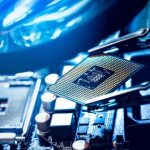The DRAGIN framework has been demonstrated to significantly enhance the performance of large language models (LLMs) by dynamically determining when and what information to retrieve during text generation. The framework’s two main components, Real-time Information Needs Detection (RIND) and Query Formulation based on Self-attention (QFS), enable the system to detect a text generation model’s real-time information needs and selectively retrieve external knowledge accordingly. This method has proven to surpass traditional static retrieval approaches and other dynamic methods, offering a more contextually aware and resource-efficient solution.
Over the years, the integration of external knowledge has been a focal point in the advancement of LLMs. Earlier studies laid the groundwork for this, with models like REPLUG and UniWeb exploring initial retrieval based on fixed inputs. The concept of multi-round retrieval was further refined with models such as RETRO and IC-RALM, which trigger retrieval at pre-set intervals. Innovative models like FLARE have taken an important step forward by triggering retrieval based on the detection of uncertain tokens, thus aligning the retrieval process with the model’s immediate knowledge requirements. Despite these advancements, DRAGIN’s dynamic retrieval and query formulation strategies mark a significant leap in the field, taking into account the context and real-time uncertainties faced by LLMs more effectively.
How Does DRAGIN Enhance Retrieval Relevance?
DRAGIN’s RIND component actively evaluates the uncertainty and semantic significance of tokens during text generation, triggering retrieval at moments most beneficial to the LLM‘s performance. The QFS component complements this by forming queries that capture the LLM’s focus within the current context, utilizing the self-attention mechanism to prioritize relevant tokens. By incorporating these two processes, DRAGIN ensures that only pertinent external information is retrieved and integrated into the model’s output, leading to improved relevance and coherence in generated text.
What Sets DRAGIN Apart from Other Methods?
When compared to baseline methods across four different knowledge-intensive datasets, DRAGIN consistently outperformed its counterparts. Its efficiency is highlighted by fewer retrieval calls than some baselines and its superior timing in identifying optimal moments for retrieval. DRAGIN’s query formulation method also stands out for its precision in selecting tokens that accurately represent the LLM’s information needs. The empirical success of DRAGIN underscores the potential of combining dynamic retrieval timing with a nuanced query formulation.
Are There Any Drawbacks to DRAGIN?
Although DRAGIN has shown exceptional performance, it is dependent on the accessibility of the self-attention mechanism in Transformer-based LLMs, which might limit its application in certain models. Future research intends to address these limitations and further refine DRAGIN’s capabilities. Meanwhile, the framework’s innovative approach to integrating external knowledge through truncating LLM output for retrieval augmentation has set a new precedent in the field.
Implications for the Reader
- DRAGIN’s dynamic retrieval may lead to more contextually accurate LLMs.
- Efficiency in retrieval suggests potential for reduced computational overhead.
- Future LLMs might incorporate similar mechanisms for dynamic knowledge integration.
In a comprehensive conclusion, DRAGIN emerges as a groundbreaking framework that significantly enhances the dynamic retrieval augmentation of LLMs. By improving the timing of retrieval activation and the precision of query formulation, it not only produces better results on knowledge-intensive tasks but also does so more efficiently. Its reliance on the self-attention mechanism suggests that future advancements in LLMs may further benefit from the integration of contextually aware, dynamic retrieval methods. DRAGIN’s methodology may inspire a new generation of LLMs that offer improved text generation by seamlessly incorporating relevant and timely external knowledge.










